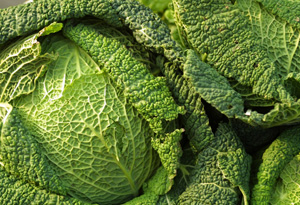Cooking with Cabbage

Photo: Photos.com/Thinkstock
Like many things from childhood, I never quite appreciated the wonder and versatility of cabbage until I left home. It was in my studies of macrobiotics and food as medicine that I came to realize the nutritional and healing properties of cabbage and ways I could integrate it into both my life and culinary repertoire as food for my body and soul. Cabbage was a daily staple of my childhood, served up alongside meat or fish and potatoes. Even though my mother was a creative soul and a great cook, our cabbage was mostly boiled and served with a daub of butter—don't mess with a good thing, I suppose.
Cabbage is at its best when it's in season in the late fall and winter months, but it stores well and can be enjoyed year-round. Whole heads of cabbage will stay fresh for several weeks in a fridge, but once they're cut, they need to be used up within four to five days. If it's not cabbage season and you can't find it organically grown, I always recommend rinsing it in a basin of cold water with about 1/4 cup apple cider vinegar to remove any pesticide residue, especially if eating it raw in salads and coleslaw.
The main varieties of cabbage are green, red and Savoy cabbage, with bok choy, Chinese or Napa cabbage, kale and brussels sprouts also being members of the same brassica family. The outer leaves in green cabbage are exposed to light, which develops the chlorophyll, hence the deeper green color, whereas the inner leaves are a paler color with a crispier texture and are often referred to as white cabbage—my favorite for making my crispy slaw!
Learn about the healing and therapeutic benefits of cabbage
Cabbage is at its best when it's in season in the late fall and winter months, but it stores well and can be enjoyed year-round. Whole heads of cabbage will stay fresh for several weeks in a fridge, but once they're cut, they need to be used up within four to five days. If it's not cabbage season and you can't find it organically grown, I always recommend rinsing it in a basin of cold water with about 1/4 cup apple cider vinegar to remove any pesticide residue, especially if eating it raw in salads and coleslaw.
The main varieties of cabbage are green, red and Savoy cabbage, with bok choy, Chinese or Napa cabbage, kale and brussels sprouts also being members of the same brassica family. The outer leaves in green cabbage are exposed to light, which develops the chlorophyll, hence the deeper green color, whereas the inner leaves are a paler color with a crispier texture and are often referred to as white cabbage—my favorite for making my crispy slaw!
Learn about the healing and therapeutic benefits of cabbage



